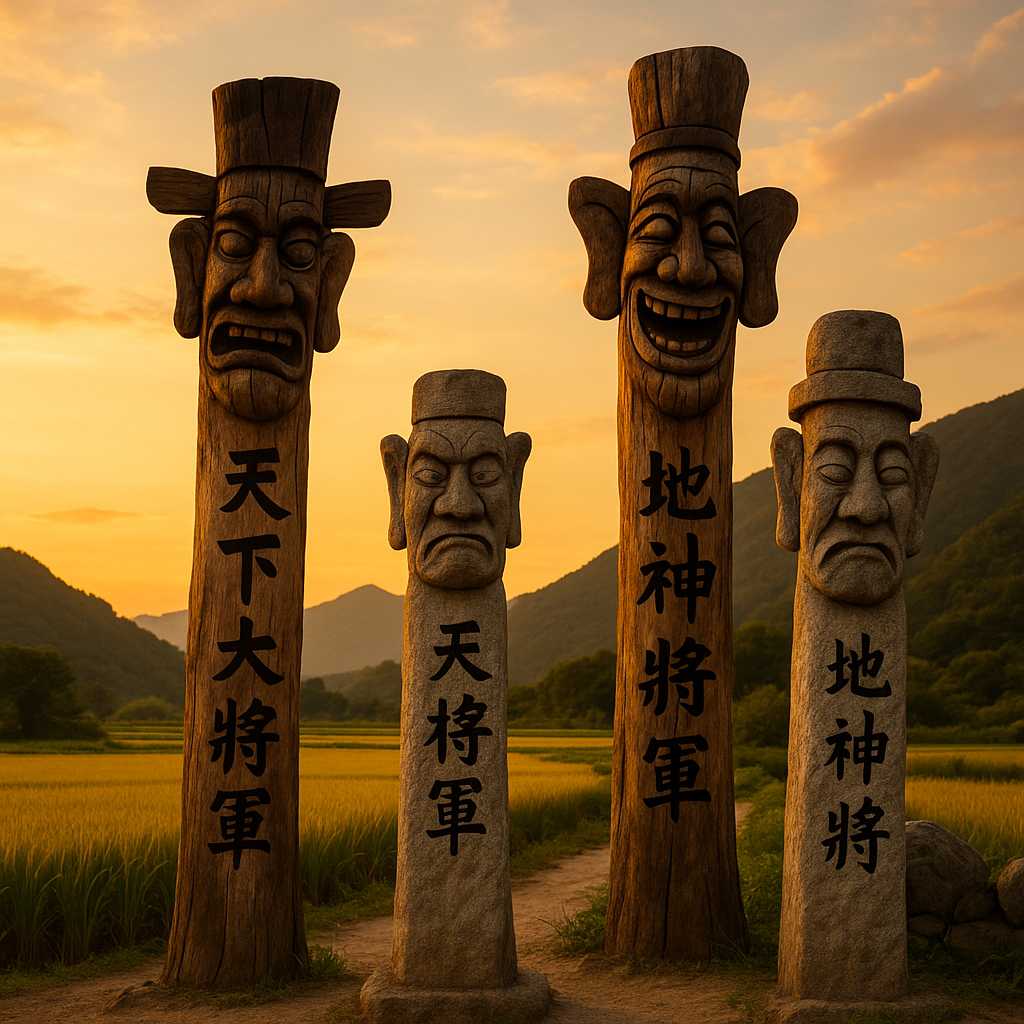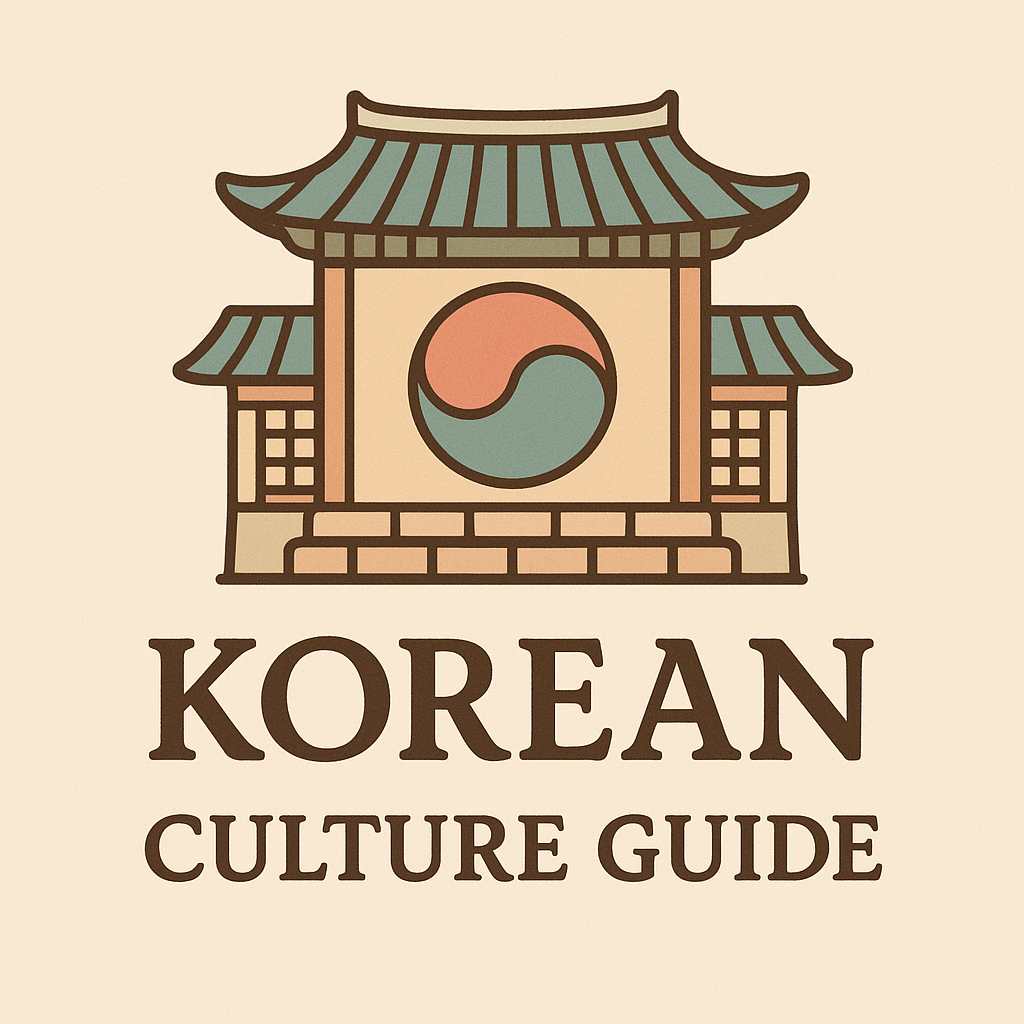-
contents
In Korea's countryside and temple grounds, you may come across tall, weathered wooden poles with fierce faces carved into their surfaces. These are Jangseung (장승), Korea’s traditional totem guardians. While they may seem like mere folk art to outsiders, jangseung once stood as sacred protectors, spiritual intermediaries, and social signposts. Their faces told stories, their words warded off evil, and their presence shaped the emotional and spiritual landscape of entire communities.
This article explores the complex world of jangseung—not only their form and function, but their cultural symbolism, mythological roots, regional variations, and continued relevance today. These “watchers of the village” protected more than roads—they safeguarded beliefs, identity, and the invisible boundary between chaos and harmony.

What Exactly Is a Jangseung? Korea’s Watchful Totem
Jangseung are traditional Korean totem poles made from wood or stone, typically erected at the entrances to villages, temples, or sacred spaces. Standing upright like sentinels, they are carved with exaggerated faces—often angry, laughing, or grimacing—and inscribed with titles like “Great General Under Heaven” (천하대장군) or “Female General of the Underworld” (지하여장군).
While at first glance they may resemble tribal totems from other cultures, jangseung serve a uniquely Korean function. They operate at the intersection of folk religion, community defense, and symbolic storytelling. Male and female jangseung often appeared as a pair, symbolizing yin and yang, balance and duality.
In some coastal or mountainous regions, jangseung were made from stone rather than wood, reflecting regional materials and styles. Some were even painted with bright red or black pigments to enhance their intimidating look. Their visual strength was as important as their spiritual power.
Guardians Against the Unseen: Evil Spirits, Illness, and Misfortune
In pre-modern Korea, people attributed many misfortunes—plagues, failed crops, natural disasters—to malevolent spiritual forces. Science could not explain these tragedies, but jangseung could defend against them. With their fierce faces and protective titles, they served as spiritual scarecrows to frighten off ghosts, demons, and bad luck.
Some jangseung were installed after a village experienced repeated illness or mysterious deaths. The community, guided by a shaman or elder, would carve and raise a jangseung to guard the village’s boundary. Offerings of rice, fruit, or alcohol were made at the base, sometimes accompanied by prayers and dances. These weren’t mere decorations—they were full-fledged participants in local rituals.
Villagers believed that jangseung would block harmful energies from entering the community, forming an invisible barrier between the sacred village center and the unpredictable outer world. They didn’t just protect homes—they protected harmony itself.
Deep Roots in Korean Shamanism and Nature Worship
Jangseung are closely linked to Korean shamanism (무속신앙), a spiritual system that believes the world is inhabited by countless spirits, both benevolent and malevolent. Mountains, rivers, trees, and stones are alive with energy, and humans must live in respectful balance with them.
In this worldview, jangseung are not just static objects. They are living intermediaries that channel communication between the human realm and the spirit world. They receive offerings, witness rituals, and even “speak” through the voice of the shaman during village ceremonies.
They also served as local deities in some regions, worshipped during seasonal festivals like Dongje (동제), a village-wide rite to pray for peace, rain, or a bountiful harvest. During these festivals, villagers would gather around the jangseung, light fires, perform dances, and share food, believing that the guardian was blessing the event with its presence.
The Power of Expression: Every Carving Tells a Story
One of the most remarkable aspects of jangseung is their facial expression. Whether exaggerated, fearsome, goofy, or dignified, each face tells a story. These expressions were not random—they were chosen deliberately to reflect the emotion and purpose of the guardian.
For example, a jangseung with bulging eyes and bared teeth might be designed to scare away malevolent spirits. Another with a crooked smile and large ears might serve to listen to villagers’ concerns and amuse children. The emotional diversity of these totems created not just protection, but personality.
Some jangseung were even said to be modeled after real people—retired generals, village founders, or spiritual leaders. Oral traditions often kept these figures alive in memory, retelling stories of how a particular jangseung protected the village during a storm or “refused” to fall when cut by invaders. These legends blurred the line between sculpture and soul.
Identity and Unity: Jangseung as Social and Cultural Anchors
Beyond their spiritual function, jangseung were powerful social symbols. They represented a village’s identity and pride. In Korea’s historical past, where inter-village rivalries and regional distinctions were common, the design and inscription of a jangseung often reflected local dialect, belief, or humor.
People gathered under the jangseung before leaving on trips, during weddings, or for village announcements. Some young couples would tie pieces of cloth to the jangseung for good fortune. In this way, it became a community bulletin board, a spiritual totem, and a storytelling platform all in one.
Even more, the jangseung often stood beside other guardians like seonangdang (신앙당, village shrines) and dolmen altars, forming a spiritual grid that mapped the village’s relationship to nature, ancestors, and each other. Through these shared icons, villagers expressed common values: protection, unity, humility before the unknown.
The Decline and Rediscovery of Jangseung in Modern Korea
During the 20th century, Korea underwent massive changes—Japanese colonization, war, industrialization, and urbanization. As cities expanded and villages modernized, many jangseung were cut down or abandoned. In some cases, they were seen as superstitious relics of a less educated past.
However, in recent decades, jangseung have made a cultural comeback. Scholars, artists, and local governments have reappraised their historical value. Carving festivals are held in cities like Namyangju and Jeju. Schools teach students how to carve mini-jangseung, and artisans create replicas for public parks, museums, and tourist sites.
Some regions even use jangseung as branding icons—promoting regional identity through their unique styles. While their original spiritual functions may have faded, their role as cultural heritage symbols is stronger than ever. The jangseung continues to guard, not against evil spirits now, but against cultural amnesia.
Why Jangseung Still Matter: Lessons from Silent Guardians
Today, jangseung stand as reminders of a time when people looked to nature, ancestors, and symbolism to make sense of the world. They teach us about fear and hope, about how communities once protected themselves not just with walls, but with meaning.
Even without spoken language, jangseung communicate powerful messages: “You are entering sacred space,” “You are being watched over,” “You are not alone.” In an era of digital noise and disconnection, these silent guardians continue to offer a grounding presence—anchoring identity, culture, and emotion.
By understanding jangseung, we don’t just learn about old Korean villages—we learn how humans everywhere have sought to draw a line between chaos and harmony. And how even a carved piece of wood, when filled with belief, can light the way.
'culture' 카테고리의 다른 글
K_Culture Guide
Korea Vibes Blog shares real stories, cultural insights, and travel tips from Korea. Discover what makes Korean life so unique.
